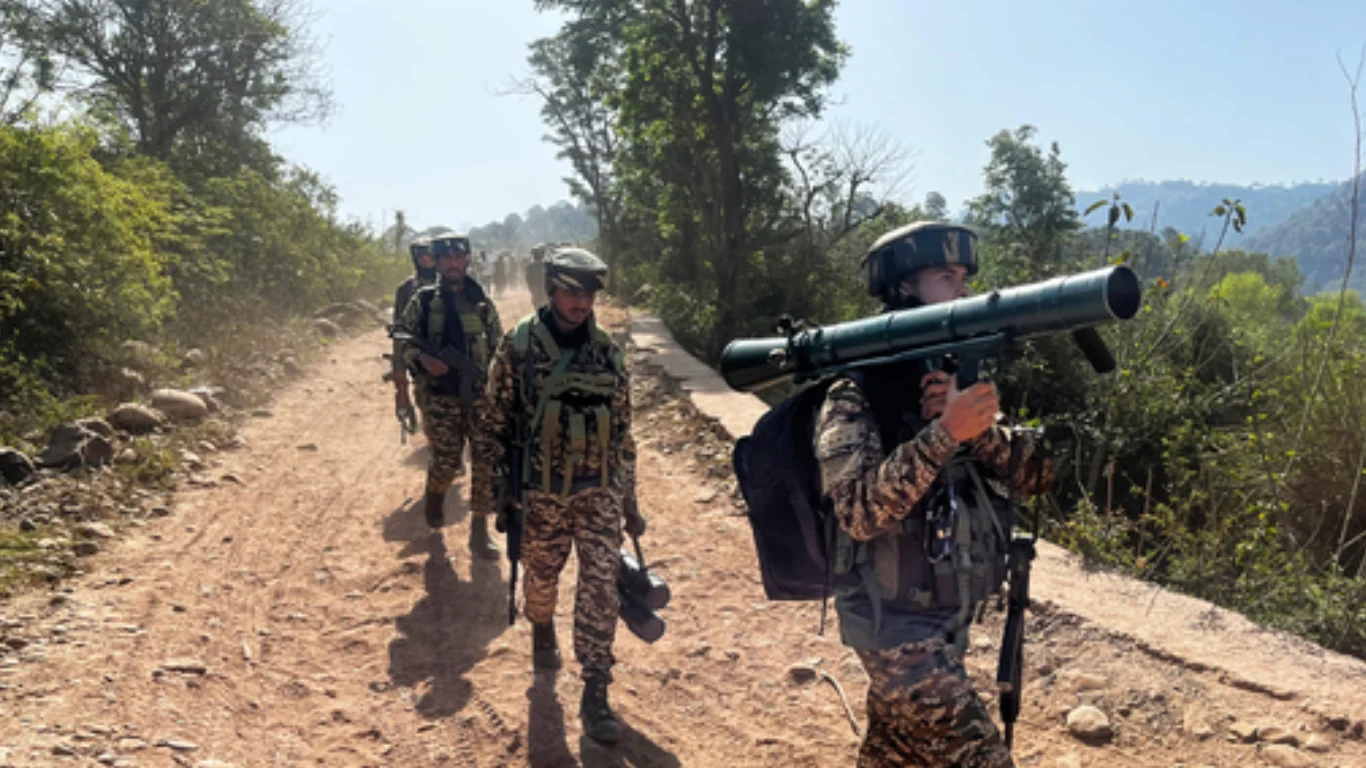
For the seventh consecutive night, tensions along the Line of Control (LoC) in Jammu and Kashmir have escalated as the Pakistan Army continues to engage in unprovoked small-arms fire targeting Indian positions. On the night of April 30 to May 1, 2025, Pakistani troops once again opened fire in the Kupwara, Uri, and Akhnoor sectors, prompting a measured but firm response from the Indian Army.
In a statement issued by Defence PRO Lieutenant Colonel Suneel Bartwal, the Indian Army confirmed its retaliatory action, stating, “During the night of 30 April–01 May 2025, Pakistan Army posts initiated unprovoked small-arms fire across the Line of Control opposite Kupwara, Uri, and Akhnoor in the Union Territory of Jammu & Kashmir. These were responded to proportionately by the Indian Army.”
This recent flare-up marks a significant deterioration of the ceasefire understanding that had been in place since February 25, 2021, when both India and Pakistan reaffirmed their commitment to the 2003 ceasefire agreement. That agreement had brought relative calm along the LoC, with both nations largely respecting the line and avoiding major provocations—until now.
Escalation in the Wake of Pahalgam Terror Attack
The current spate of violations follows closely on the heels of the brutal terrorist attack in Pahalgam that claimed 26 lives, most of whom were tourists. India has accused Pakistan-backed groups of orchestrating the massacre and, in response, has taken several diplomatic and strategic measures to signal its displeasure. Among the most impactful has been the suspension of the 1960 Indus Water Treaty, a long-standing agreement that governs the use of rivers shared by the two nations.
Following this, ceasefire violations intensified, beginning on April 25–26 when Pakistani forces reportedly opened fire at various forward positions across Jammu and Kashmir. The violations persisted on April 27 with incidents reported from the Tutmar Gali and Rampur sectors, and further escalated over subsequent days.
On April 28, unprovoked firing was observed in the Poonch and Kupwara sectors. A day later, the Chenab post in the Pargwal sector of Akhnoor came under fire, marking yet another breach in a pattern that appears to be deliberate and provocative.
DGMOs in Direct Communication
Amid this rising hostility, a direct hotline conversation was held between the Directors General of Military Operations (DGMOs) of India and Pakistan. According to defence sources, India issued a stern warning to Pakistan, making it clear that continued violations would not be tolerated and would be met with strong retaliation. The call was aimed at de-escalating tensions but also underscored India’s firm stance following the Pahalgam attack.
This communication, while diplomatic in nature, reflects the gravity of the situation. Sources indicate that Indian defence officials emphasized their right to defend civilian populations and forward posts, and conveyed deep concern about the repeated targeting of areas in close proximity to populated villages.
Civilian Life Disrupted: Bunkers Come to the Fore
As the gunfire echoes across border villages, fear has returned to the lives of residents living near the LoC. In response to the deteriorating security situation, civilians in these areas have begun reinforcing and renovating underground bunkers—dubbed “Modi bunkers” after Prime Minister Narendra Modi—designed to shield them during periods of cross-border firing.
These bunkers, constructed as part of a central government initiative following earlier episodes of heightened tensions, have now become essential lifelines once again. Many families have moved into these fortified shelters during nighttime hours, especially in vulnerable areas like Poonch, Kupwara, and Akhnoor, where the exchange of fire has become increasingly routine.
“There is no guarantee when the firing starts or stops,” said a resident of a border village in Akhnoor. “These bunkers are our only protection. We’re constantly living in fear.”
Strategic and Political Implications
The recurrence of ceasefire violations and their timing—right after a major terror incident—has not gone unnoticed in New Delhi. Analysts suggest that Pakistan’s actions may be intended as a diversionary tactic to shift attention or provoke a military misstep from India. However, India has thus far responded with calculated military precision and has chosen to escalate diplomatically rather than through large-scale military retaliation.
The situation also poses a challenge for India’s broader regional strategy, especially with increasing cooperation with international partners such as the United States. U.S. Secretary of State Marco Rubio, during a recent conversation with External Affairs Minister S. Jaishankar, reiterated America’s commitment to working with India on counterterrorism and encouraged both nations to pursue diplomatic avenues to reduce tensions.
Nevertheless, in Delhi, there is a growing sentiment that the diplomatic channel alone may not be sufficient if Pakistan fails to rein in terror proxies and uphold ceasefire agreements.
A Precarious Path Ahead
The next few days are critical. With security forces in Jammu and Kashmir on high alert and anti-terror operations being intensified in the Valley, the possibility of further escalation remains high. The Indian government has granted the armed forces full operational freedom to decide on the timing and nature of their response to provocations across the LoC. This flexibility could lead to targeted operations if ceasefire violations continue unchecked.
Meanwhile, the civilian cost of conflict is becoming increasingly evident. Schools have been closed in several border districts, agricultural activity is stalled, and displacement is once again looming as a real threat to border communities. While India has shown restraint, it is clear that its patience is not without limits.
As both armies remain on edge and political rhetoric hardens, the international community is watching closely. With nuclear capabilities on both sides, even a single miscalculation could prove catastrophic. Yet, amid the drumbeats of conflict, the enduring hope remains that diplomacy, backed by firm resolve, will guide the subcontinent away from the brink.

















